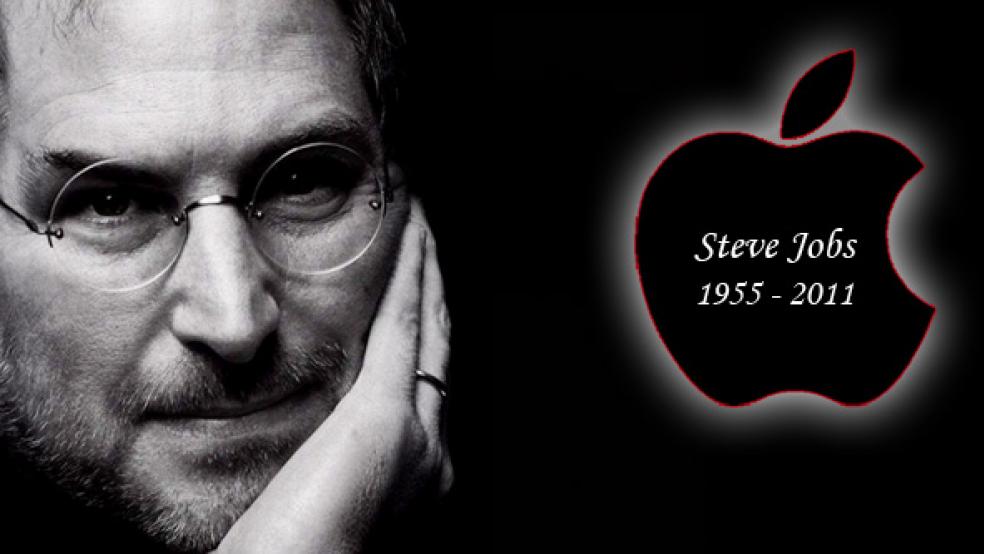Steve Jobs, the brilliant, mercurial co-founder of Apple Inc. who introduced simple, elegantly designed computers for people who are more interested in what technology could do rather than how it was done, died Oct. 5 at age 56.
In a brief statement, Apple announced the death but did not say where he died. He suffered from a rare form of pancreatic cancer and had a liver transplant in 2009, and he stepped down as Apple’s chief executive officer on Aug. 24, 2011.
An original thinker and astute businessman who helped create the Macintosh, one of the most influential computers in the world, Mr. Jobs also reinvented the portable music player with the iPod, launched the first successful legal method of selling music online with the creation of iTunes, and reordered the cellphone market with the wildly popular iPhone. The introduction of the iPad also jump-started the electronic tablet market and now dominates the field.
He also started a highly successful chain of retail stores and almost single-handedly pushed consumers away from their dependence on floppy disks and CDs.
Cool, charismatic and calculating that people would be willing to pay a premium price for products that signal creativity, Mr. Jobs had a genius for understanding the needs of consumers before they did. He knew best of all how to market. “Mac or PC?” became one of the defining questions of the late 20th century, and although Apple sold a mere 5 percent of all computers in that era, Mac users became rabid partisans and dedicated to Mr. Jobs.
Mr. Jobs was the first crossover technology star, turning Silicon Valley renown to Main Street recognition, and paving the way for the rise of the nerds such as Yahoo founders Jerry Yang and David Filo, Google founders Larry Page and Sergey Brin and Facebook’s Mark Zuckerberg.
As a 21-year-old college-dropout-entrepreneur, Mr. Jobs led Apple to multimillion-dollar success in five years. Forced out of his own company by the time he was 30, he started another computer firm, NeXT, whose technology was used to create the World Wide Web. Mr. Jobs also took over a foundering computer animation company and turned it into the Academy Award-winning Pixar, maker of “Toy Story,” “Finding Nemo” and “A Bug’s Life.” He returned to save Apple from near-certain oblivion in his 40s, radically cutting the product line and restoring the company to both profitability and leadership in innovation.
Known within the technology community for his complex and combative temperament, Mr. Jobs, a famously private man, had kept his pancreatic cancer diagnosis and surgery secret for more than a year, asserting that his preference for personal privacy outweighed the rights of shareholders to know about his health. He revealed the news in a June 2005 commencement address at Stanford University. He later became furious at speculation over his health in mid-2008, when he appeared in public looking gaunt. In late 2008, he took a medical leave from the company and had a liver transplant the following year.
In January 2011, he took another medical leave, and Aug. 24, 2011, he stepped down as Apple’s chief executive but became chairman of board. So essential did stockholders consider him to the company’s future that Apple’s share price immediately dropped 5 percent on the news, although it rebounded the next day.
“Steve Jobs running the company from jail would be better for the stock price than Steve Jobs not being CEO,” one stock analyst told Fortune magazine in early 2011.
His constant innovations led Business 2.0 to call him “easily the greatest marketer since P.T. Barnum.” One of his employees, noting that Mr. Jobs is able to persuade people to believe almost anything, coined the term “reality distortion field” to describe his ability to warp an audience’s sense of proportion. Mr. Jobs described the Macintosh computer, for example, as “insanely great.”
Maybe it was. It was designed for the home and creative professional user, not the computer science nerd or the bottom-line oriented businessman. During a famous 1979 visit to Xerox Parc, the hotbed of innovation where the computer mouse, networking and graphical user interface were invented, he and Apple co-founder Steve Wozniak learned that computer users did not have to type in a series of arcane commands to get the computer to perform; they could simply point their mouse at a picture of a file and click the mouse to get the file to open.
That recognition sparked a flurry of innovations, unmatched in technology until designers of Microsoft’s operating software copied the look and feel of their California competitors in Windows 95.
Years later, discussing computer design in another context, Mr. Jobs said, “Most people make the mistake of thinking design is what it looks like. People think it’s this veneer — that the designers are handed this box and told, ‘Make it look good!’ That’s not what we think design is. It’s not just what it looks like and feels like. Design is how it works.”
He could control how it works because Apple “makes the whole widget,” as Mr. Jobs repeatedly said — software and hardware. The company introduced monitors with color screens long before others. Locked out of many retail chains because of Apple’s small market share, Mr. Jobs responded with its own distinctively branded stores, to which users flock like pilgrims to Mecca. The Mac, he saw, could become the hub of a digital lifestyle.
Not everything has worked out. A 1983 computer, Lisa, failed miserably. Ten years later, the Newton, one of the earliest handheld computers, died years before other personal digital assistants succeeded. Even the “insanely great” Macintosh, sold without a letter-quality printer or a hard disk drive and incompatible with other computers, had a difficult start, although it nevertheless launched the desktop publishing revolution.




